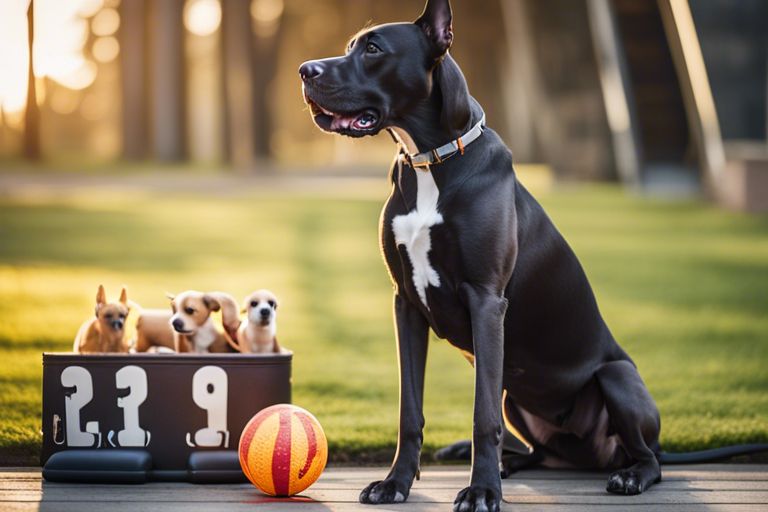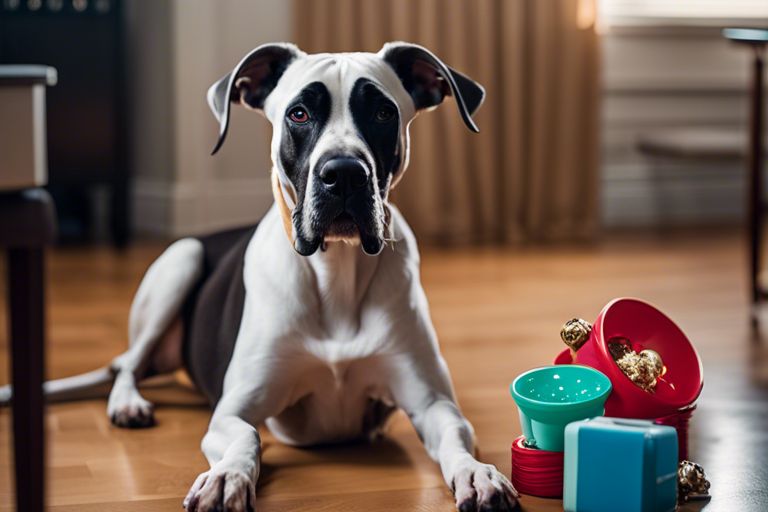It’s fascinating to explore the diverse world of dogs, from the massive giants to the tiny teacup breeds. In this blog post, we explore into the top 5 largest and smallest dog breeds in the world, highlighting their unique characteristics and sizes. Whether you’re a fan of the majestic giants or the adorable pocket-sized pups, this list will surely pique your interest and expand your knowledge of the wonderful world of dogs.
Key Takeaways:
- Size Variation: The top 5 largest and smallest dog breeds show a significant range in size, from the towering Great Dane to the tiny Chihuahua.
- Exercise Needs: Larger breeds such as the Saint Bernard and Great Pyrenees require ample space and exercise, while smaller breeds like the Chihuahua and Yorkshire Terrier can get their exercise needs met inside a smaller living space.
- Temperament: Each of the largest and smallest dog breeds possess unique temperaments and characteristics, with larger breeds often being more gentle and laid-back, and smaller breeds being known for their spunky and energetic personalities.
The Giants: Top 5 Largest Dog Breeds
The Great Dane
Any discussion about the largest dog breeds in the world would be incomplete without mentioning the majestic Great Dane. Known for their imposing size and gentle demeanor, Great Danes are truly a giant breed that often stands tall as one of the largest dog breeds globally.
The English Mastiff
Giants among giants, the English Mastiff is another colossal breed that commands attention. With a history dating back to ancient times, these gentle giants possess a calm and loving temperament that makes them excellent family companions despite their massive size.
This breed’s origins can be traced back to ancient civilizations, where they were prized for their strength and loyalty. English Mastiffs are known to be protective of their loved ones, making them excellent watchdogs while also being gentle and affectionate companions.
The Irish Wolfhound
An impressive sight to behold, the Irish Wolfhound is a breed known for its towering height and graceful presence. These gentle giants have a rich history as hunting companions and are cherished for their loyalty and affection towards their families.
For instance, Irish Wolfhounds were revered in Irish folklore for their bravery and noble characteristics. Despite their size, these giants have a sweet and gentle nature, making them a beloved breed for those seeking a companion with a big heart.
The Saint Bernard
Breeds like the Saint Bernard are famous for their massive build and gentle temperament. These gentle giants have a storied history of serving as rescue dogs in the treacherous Alps, showcasing their strength, intelligence, and unwavering loyalty.
Understanding the Saint Bernard’s gentle nature and impressive size is important for anyone considering this breed. Though they may appear imposing, these giants are well-known for their friendly disposition and devotion to their human families, making them a cherished addition to any home.
The Newfoundland
Dane
Another breed that falls into the category of the largest dog breeds is the Newfoundland. These gentle giants are renowned for their water rescue abilities, calm demeanor, and affectionate personality, making them an ideal choice for families looking for a loving and steadfast companion.

The Tiny Ones: Top 5 Smallest Dog Breeds
The Chihuahua
Keep in mind that when it comes to pint-sized pups, the Chihuahua reigns supreme. Weighing in at just 2 to 6 pounds and standing at 5 to 8 inches tall, these little dogs pack a lot of personality in their tiny frames. Known for their loyalty and big attitudes, Chihuahuas are a favorite choice for many dog lovers looking for a compact companion.
The Pomeranian
For those who prefer a fluffy ball of fur, the Pomeranian is a popular choice. Weighing around 3 to 7 pounds and standing at 7 to 12 inches tall, these lively dogs are known for their outgoing personalities. Despite their small size, Pomeranians are often confident and spirited, making them great companions for families and singles alike.
Another breed that falls into the tiny category is the Toy Poodle. Weighing approximately 4 to 6 pounds and standing at 8 to 10 inches tall, these intelligent and adaptable dogs are full of energy and charm. Toy Poodles are known for their hypoallergenic coats and high intelligence, making them a popular choice for those looking for a small yet clever pet.
The Yorkshire Terrier
Pomeranian in stature, the Yorkshire Terrier is a dainty breed weighing around 4 to 7 pounds and standing at 7 to 8 inches tall. With their silky blue and tan coats, Yorkies are affectionate and bold little dogs. They may be small, but they have a big personality and are known for being brave and confident companions.
Lastly, the Russian Toy is a small breed that weighs approximately 3 to 6 pounds and stands at 8 to 11 inches tall. With their elegant appearance and lively demeanor, Russian Toys are devoted and playful pets. These loving companions are always eager to please and form strong bonds with their owners.
The Russian Toy
Terrier in nature, the Russian Toy is a delightful small dog breed that is adored for its affectionate and lively personality. Weighing around 3 to 6 pounds and standing at 8 to 11 inches tall, these charming dogs are known for their playful and friendly nature. Russian Toys thrive on human companionship and are happiest when they are part of a loving family.
Smallest of the small, these tiny dog breeds may be little in size, but they have hearts as big as their larger counterparts. Whether you prefer the sass of a Chihuahua, the fluff of a Pomeranian, the elegance of a Toy Poodle, the boldness of a Yorkshire Terrier, or the charm of a Russian Toy, these small breeds offer a lot of love in compact packages.
Factors Influencing Size in Dogs
Despite the wide range in sizes among dog breeds, there are several key factors that influence their size. These factors include genetics, nutrition, environment, and breeding practices. Perceiving these influences can help us better understand why certain breeds are larger or smaller than others.
Genetics and Breeding
Genetics play a critical role in determining the size of a dog. Breeding practices, such as selecting for specific traits like size, can also impact the size of a breed. Through selective breeding, breeders can either emphasize or diminish the size of a particular breed over generations.
Nutrition and Growth
Influencing a dog’s size, nutrition plays a significant role in their growth and development. A well-balanced diet with the right amount of protein, vitamins, and minerals is crucial for a dog to reach its full size potential. Overfeeding or underfeeding can lead to stunted growth or obesity, affecting the overall size of the dog.
Understanding the importance of nutrition and growth is crucial in ensuring a dog reaches its optimal size and maintains good health throughout its life. Providing a balanced diet tailored to the specific needs of the breed can help in achieving the desired size and structure.
Caring for Different Sizes of Dogs
Special Considerations for Large Breeds
Large dog breeds like Great Danes, Mastiffs, and Saint Bernards have specific needs that owners must consider. These breeds require sturdy, durable toys and bedding to withstand their size and strength. Proper nutrition is also necessary to support their growth and prevent joint issues. Regular exercise is crucial for maintaining their health and preventing obesity. Large breeds are also more prone to certain health issues like hip dysplasia, so regular check-ups with a vet are important to catch any problems early.
Special Considerations for Small Breeds
With small dog breeds like Chihuahuas, Pomeranians, and Yorkshire Terriers, special care needs to be taken due to their delicate size. They can easily get injured if handled roughly or if they jump from high surfaces. Small dogs usually have a faster metabolism, so they may need to eat more frequently throughout the day. It’s important to protect them from extreme temperatures since they have less body mass to regulate their temperature.
Understanding the unique needs of small breeds is crucial in ensuring their well-being. Despite their small size, these dogs are often full of energy and can be quite playful. Providing them with mental stimulation through interactive toys and training sessions can help keep them happy and healthy. Regular dental care is also important for small breeds, as they are more prone to dental issues due to their small mouths.
Final Words
With these considerations of the top 5 largest and smallest dog breeds in the world, we can see the incredible diversity found within the canine world. From the towering Great Danes to the tiny Chihuahuas, each of these breeds brings its own unique characteristics and charm. Whether you prefer a giant companion or a pint-sized sidekick, there is a breed out there to suit every preference. Be mindful of, when choosing a dog, size is just one factor to consider; it’s crucial to also think about temperament, exercise needs, and compatibility with your lifestyle. Ultimately, the most crucial factor in choosing a canine companion is finding a breed that fits into your life seamlessly and can bring you joy for years to come.
FAQ
Q: What are the top 5 largest dog breeds in the world?
A: The top 5 largest dog breeds in the world are Great Dane, English Mastiff, Saint Bernard, Neapolitan Mastiff, and Newfoundland. These breeds are known for their impressive size and strength.
Q: What are the top 5 smallest dog breeds in the world?
A: The top 5 smallest dog breeds in the world are Chihuahua, Pomeranian, Yorkshire Terrier, Maltese, and Pekingese. Despite their small size, these breeds are full of personality and make great companions.
Q: Are there any health concerns associated with large or small dog breeds?
A: Both large and small dog breeds have their own set of health concerns. Large breeds can be prone to joint issues, heart problems, and bloat due to their size. Small breeds may be susceptible to dental problems, luxating patella, and hypoglycemia. It is necessary to provide proper care, regular vet check-ups, and a balanced diet to keep these dogs healthy.

